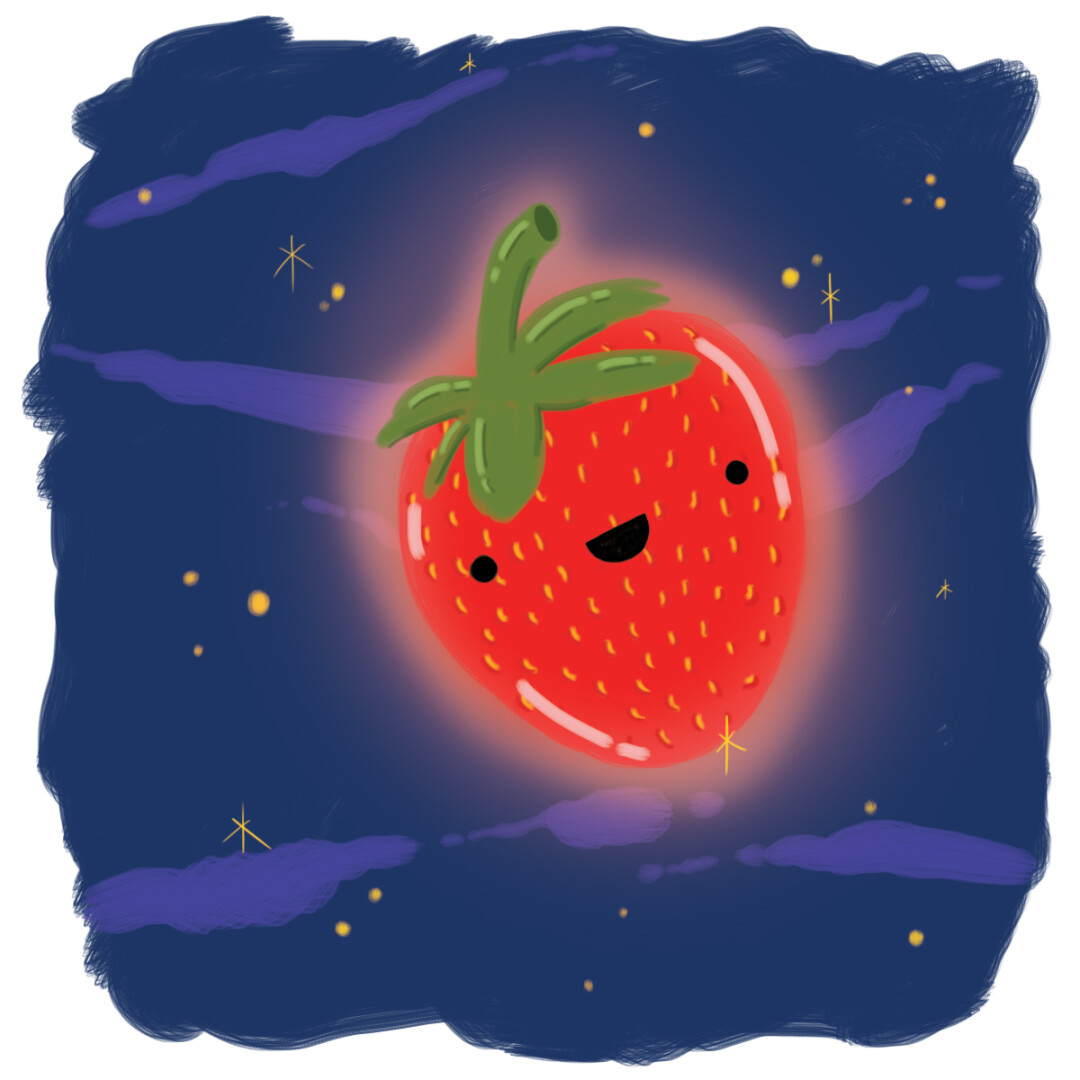Strawberry Moon
when rare events build common ground
Mike Paulus, design by Serena Wagner |

In the days leading up to the last full moon, children were seen meandering through the downtown farmers market holding cardboard flats piled high with strawberries. They teetered through the crowd behind their parents, threatening to spill an avalanche of juicy red nuggets at every jostle and nudge.
And the little stands were appearing, as if by magic, along our highways and at our busy intersections. Out in the Walmart parking lot. Just a little wooden counter topped with a hand-painted sign: STRAWBERRIES. An old pickup truck parked nearby and a bored teenager staring at her phone.
Strawberries are in season. They’re a sign that summer is really, actually here, and a reminder of the good things we get from area farmers. Unless you’re allergic to strawberries, in which case I assume you see roadside berry salesmen as menacing peddlers of death hunkered down in cheap folding lawn chairs.
But let’s get back to that full moon. Every moon of the year has a name in practically every culture – Wolf Moon, Flower Moon, Hunter’s Moon, and even the Beaver Moon (not kidding). The moon monikers most of us know originated in the Algonquin tribes of North America and were adopted by European settlers. While different tribes used different names, one was universal to them all: the “Strawberry Moon” in June.
And yes, they called it that because of all the ding dang strawberries.
What’s more, this year’s Strawberry Moon featured an interesting addendum: it floated up into the sky on the very same evening as this year’s Summer Solstice (June 20) – the longest day of the year (for our half of the planet, anyway). This paring of sky-based phenomena hadn’t occurred since 1967. It won’t happen again until 2062.
So this year, the first day of summer was officially heralded by a big, beautiful moon, named by ancient people whose very culture was entwined with what grows from the earth, giving shape and meaning to their days. And hundreds and hundreds of years later, we still know the name of the moon, and we still love strawberries.
So this year, the first day of summer was officially heralded by a big, beautiful moon, named by ancient people whose very culture was entwined with what grows from the earth, giving shape and meaning to their days. And hundreds and hundreds of years later, we still know the name of the moon, and we still love strawberries.
That’s pretty cool.
Oddly, if it weren’t for Facebook and my iPhone, I’d never had even heard of the Strawberry Moon, and I may have missed mention of the Summer Solstice. So, much gratitude goes out to the technology keeping me connected to all this pretty cool ... earth stuff.
It’s a connection passed down, generation to generation, culture to culture. A line drawn through voice, then onto paper, and then across satellites orbiting in space. And however the phrase “Strawberry Moon” came into my mind, I’m just so happy it did. It made me think about much bigger things than what TV show to watch.
Speaking of television, astrophysicist, champion of science, and American hero Neil deGrasse Tyson was recently on a talk show discussing the significance of the Strawberry Moon. He explained how we get excited at the “rarity” of celestial events, at how a particular alignment in the sky only happens every few hundred years. But, says Neil, people don’t stop to tell you (or even realize) that in the unknowable enormity of the universe, there’ll be another equally rare space-tastic alignment happening tomorrow. And the next day. And Tuesday.
Neil argues that we assign importance to these rare events and alignments because we want them to hold meaning. But, as he concludes, “Something can be rare but uninteresting, because of how common its rarity is.”
To be honest, I agree with Neil. But I try to look at it differently. I think every single moment is amazing because of its rarity. And the next moment’s uniqueness (or the uniqueness of the next million moments) does not diminish the current moment’s importance.
Because this moment is actually everything.
And this ridiculous assemblage of events – from stars exploding to forge the iron in your blood to your parents tripping into each other in a crowded bar – all of the incredibly common things that tumbled together to make you a living, breathing animal munching on strawberries and gawking at a big full moon – all of it makes you astronomically lucky.
And that luck is what we all have in common. It holds our atoms in place, it binds us to one another, and it granted us our precious time.
And that? That’s pretty cool.






















